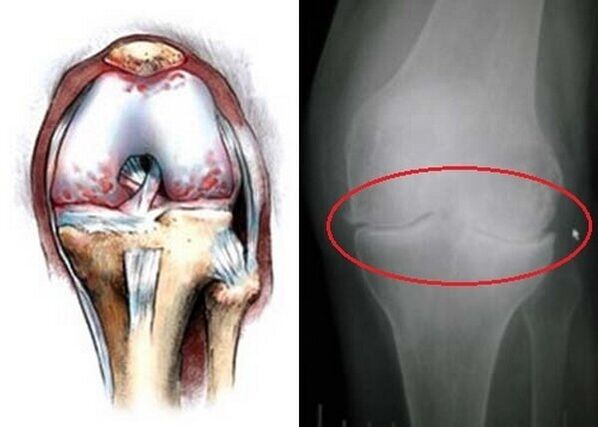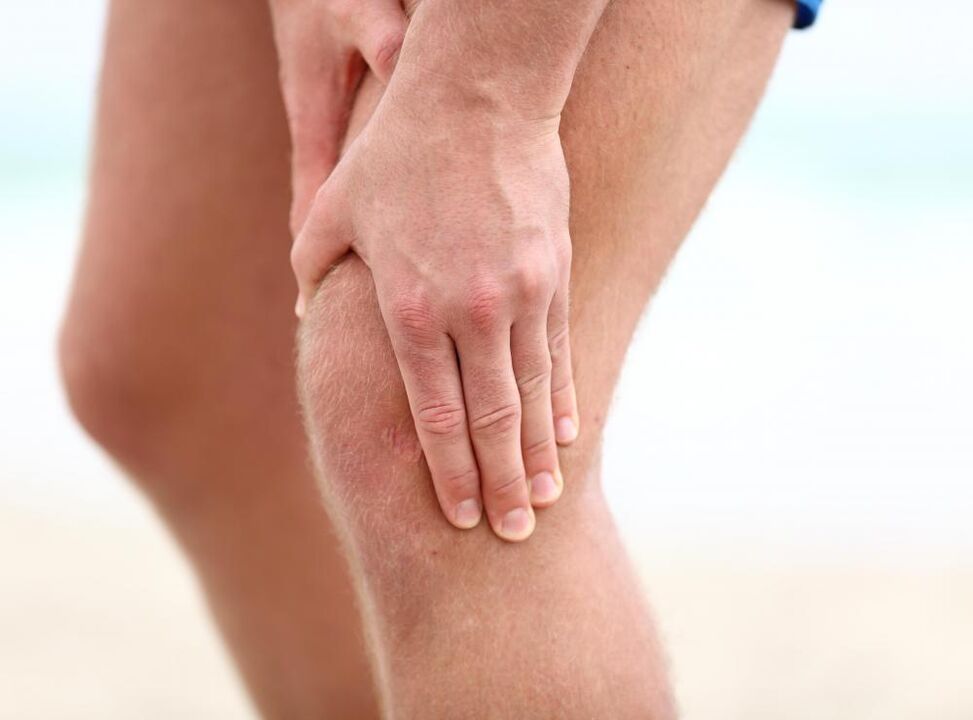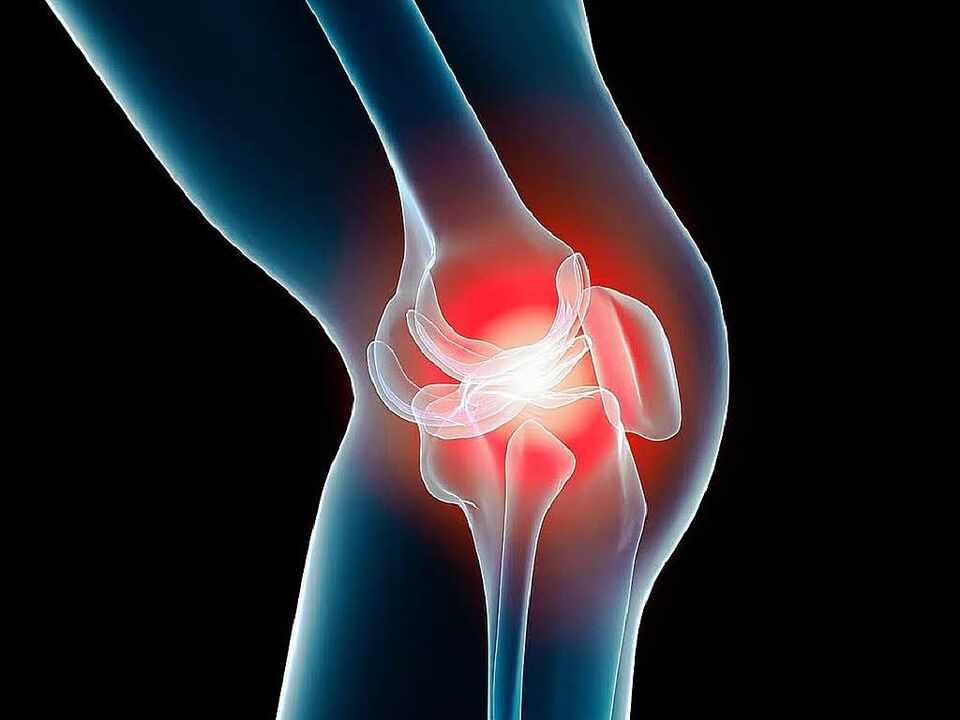Weakly bent legs, inability to walk without support - all this seems to be a sign of old age, but it can actually be caused by illness. Knowledge about the disease can help everyone, because timely treatment prolongs the youth of the joints. Gonarthrosis of the knee joint has another name - deforming arthrosis or joint osteoarthritis.

The disease belongs to the group of degenerative-dystrophic diseases. As a result of pathogenic factors, changes occur in the tissues of the joint, and this pathology affects not only the cartilage of the knee joint, but also the bones, ligaments, joint capsule and the muscles that ensure its function.
This disease is one of the most common pathologies of the musculoskeletal system. Due to changes in the structure of the hyaline cartilage tissue, they lose their elasticity and firmness and gradually collapse. This leads to an increase in the effect on bone tissue, the appearance of so-called osteophytes. These are "thorns", which are bone growths in the joint. If arthrosis of the knee joint is not treated, the cartilage tissue can gradually disappear completely, the bones can be deformed, and the function and performance of the joint is lost.
Causes of gonarthrosis of the knee

This disease is considered idiopathic, that is, the causes of osteoarthritis of the knee joint have not yet been precisely clarified. There are two main types of gonarthrosis: primary and secondary.
Primary or idiopathic gonarthrosis of the knee joint develops due to metabolic and circulatory disorders of the lower limbs. This form of the disease mainly affects the elderly, especially women and overweight people. Degenerative-dystrophic changes in the cartilage tissue can be caused by excessive load on the joint, violation of normal blood circulation, and multiple tissue microtraumas. Hormonal disorders and endocrine disorders can also lead to this.
Secondary or traumatic gonarthrosis develops as a result of mechanical damage to the joint. This leads to:
- knee injuries - damage to the ligaments, menisci of the knee joint, fractures and cracks in the bones in case of hemarthrosis;
- various inflammatory diseases - rheumatism, arthritis;
- non-inflammatory joint changes - chondrosis, arthrosis of various etiologies;
- early and incomplete treatment of diseases of the knee joint;
- trauma and injury in the past.
Symptoms of the disease
The symptoms of arthrosis of the knee joint develop gradually. At the beginning of the disease, pain occurs during physical exertion, overexertion or after a long walk, and then additional symptoms appear, and a detailed clinical picture of the disease appears.

Symptoms:
- pain in the knee joint during movement;
- swelling of the joint;
- limitation of movement in the joint;
- stiffness of the knee joint;
- instability leaning on the sore leg;
- visible deformity of the bones of the joint.
Stages of gonarthrosis disease
The clinical picture has several stages that reflect the severity of the disease:
- Stage 1 - mild movement restriction in the joint, increased fatigue of the limb, the pain is mild, occurs at the beginning of movement or after physical exertion, the pain and stiffness of the joint disappear at rest. The bones keep their shape, there is no deformation. The X-ray shows a slight narrowing of the joint space.
- Stage 2 - marked limitation of movement, pain during walking becomes constant, especially aggravated by physical exertion, prolonged standing. During movement, there is pronounced cracking in the joint, lameness, bones are deformed, ligaments and muscles are weakened. On the X-ray, the joint space narrows 3 times compared to the norm, osteophytes grow on the bones, fluid may appear in the joint cavity.
- Stage 3 - the pain becomes permanent and does not go away after rest and relaxation. Movement is sharply limited, possibly a violation of blood circulation in the joint. On the X-ray, the joint space is practically absent, the bones are sharply deformed, and a strong growth of bone tissue can be observed.
Diagnosis and treatment of gonarthrosis
The diagnosis of the disease includes an examination of the patient and an X-ray examination of the affected limb.
Treatment of the disease should be started as early as possible. A thorough examination and consultation of an experienced specialist is necessary, as this disease is associated with non-specific symptoms and can easily be confused with other changes in the joint system.
The main principles of treatment aimed at therapeutic effects:
- eliminates pain in the knee joint;
- improves blood circulation and accelerates the regeneration of cartilage tissue;
- reduces the pressure between the bones of the joint;
- restores the mobility of the limbs;
- strengthens muscles and ligaments.
Methods of treatment of gonarthrosis
Gonarthrosis is treated with drugs, physiotherapy exercises, folk remedies and manual therapy.

- Non-steroidal anti-inflammatory drugs (NSAIDs). It is traditionally used to treat inflammatory diseases of the joints. It relieves pain well, reduces swelling and inflammation. But the use of these medicines only gives temporary relief and does not cure the disease itself. In addition, they have many contraindications and side effects.
- Chondroprotectors are the most etiological treatment, they help cartilage tissue to regenerate and eliminate the cause of the disease. Their application is effective in the early stages of the disease. Long-term use of chondroprotectors is necessary to achieve the result.
- Local remedies - various ointments and creams - have anti-inflammatory and pain-relieving effects.
- Intra-articular injections are used for emergency care. The most commonly used drugs are corticosteroid hormones. They quickly and effectively suppress pain and inflammation within the joint, but like NSAIDs, they only have a symptomatic effect.
- Manual therapy and physiotherapy can have a significant therapeutic effect in the 1st and 2nd stages of the disease.
- Diet. Gonarthrosis of the knee joint is called the disease of "salt deposits". Therefore, with this disease, you should follow a diet that excludes foods that contribute to salt formation. The intake of dietary salt should be limited to 1 g per day, meat, canned food, sweets, fatty foods, flour.
- Walking support – using crutches or a cane can significantly reduce the stress on the knee joint and help you recover faster.
- Therapeutic gymnastics is the main method of rehabilitation following the treatment of gonarthrosis. Only special exercises help restore lost mobility, strengthen muscles and ligaments, and improve blood circulation. Without specially designed exercises, it is impossible to restore limb functions.
- Surgical treatment - in the absence of the effect of therapeutic methods, in the 3rd stage of the disease, in case of severe joint deformity, surgery is required. This is usually joint arthroplasty. This operation makes it possible to restore the mobility of the limb, but it has many contraindications and limitations. This is also quite expensive financially.
A complete cure of this disease is almost impossible. In order to achieve a stable remission of the disease, you should follow all the doctor's recommendations, try to exercise more, do special exercises, take chondroprotectors and drugs that improve blood circulation, and follow a diet.

























